Sancheongyulsuwon [Korea Quality] / 산청율수원 [한국관광 품질인증]
12.6 Km 13079 2020-09-10
36, Sindeunggahoe-ro Sindeung-myeon, Sancheong-gun, Gyeongsangnam-do
+82-55-974-0221, +82-10-9802-1132
Sancheong Yulsuwon was opened in October 2013 as traditional hanok accommodations to provide guests comfort and relaxation in nature. It was named after the expression from “Decade of Wen Wang” of the Classics of Poetry (the oldest existing collection of Chinese poetry), meaning “Following the virtue of ancestors, one should cultivate one’s mind,” in the hope that guests can experience traditional Korean culture in hanok and learn common themes and cultivate virtues in life. Located at the hanok street in Sancheong County, Gyeongsangnam-do Province, Sancheong Yulsuwon is a hanok stay facility established by Korea’s major education company JEI Corporation. It was built by expanding and renovating the Old House of Suncheon Park’s Clan for over four years. It is not only a hanok cultural facility but also an educational facility that aims to provide visitors comfortable relaxation and to establish a sound, rich environment of educational culture, which is also the philosophy of JEI Corporation. It is located around the Dumulmeori area where Dangyecheon Stream and Sindeungcheon Stream -- the water branch of Hwangmaesan Mountain (1,108m above sea level) -- meet. The area is known for many houses of noble families situated in a propitious site combined with mountains and water and as a hanok village with the old stone wall, which was designated as a cultural heritage. Among them, Sancheong Yulsuwon is an outstanding hanok structure built on a total area of about 2,975m2 according to the theory of divination based on topography.
Entering the main gate Yeongsumun, one sees the Anchae (inner house) situated in front, the outer Sarangchae (detached building) on the right, and the bathroom on the left. Then, there are the inner Sarangchae, the kitchen, and the pavilion around the vegetable garden and the pond. The arrangement of buildings has special meaning: the kitchen signifies a green dragon (east), the bathroom, a white tiger (west), the inner Sarangchae, an Ansan (a low and small mountain in front of the house), and the outer Sarangchae and the main gate, a Josan (a high mountain behind Ansan); these five buildings seem to embrace the Anchae. As for the special names of the buildings, the inner Sarangchae built with the splendid style of semi-hipped roof and double eaves was named “Nongam,” meaning “a thatched cottage of a skilled farmer”; the outer Sarangchae was named “Goheon,” meaning “an old sarangchae,” and the Anchae -- named “Hagyejae” meaning “modesty” -- is situated in the innermost area. In particular, its upper floor (numaru) offers an open view of the environment. The bathroom, which was named “Seoljodang” meaning “one should keep the mind and body clean,” is composed of two connected houses. It is also equipped with red clay sauna and jjimjilbang (Korean dry sauna).
Sancheong Yulsuwon was built based on a traditional hanok style of the Yeongnam area, with a splendid Seoul style of modernity added to the design. The sunshine comes through the windows made of hanji (Korean paper) in the clean and cozy rooms. Guests can also enjoy the outside view from the windows, which show the typical scenery of hanok consisting of jars, trees, flowers, and low stone wall with tiled roof. Every room is equipped with a bathroom including a bathtub and a modern-style kitchen. Sancheong Yulsuwon is adjacent to various tourist attractions including the following: valley of Daewonsa Temple surrounded by Geumgang pine trees; Namsa Yedamchon village, a village with an old wall made of red clay and stones; and Jeongchiwam Hermitage, Traditional Buddhist Temple No. 83 built by Silla’s Buddhist monk Uisang (625-702) and where the Buddhist Painting of Mountain Spirit can be found.
Seonyudonggyegok Valley (Sancheong Section) (선유동계곡(산청))
13.0 Km 9348 2022-08-10
Suwol-ro, Sancheon-gun, Gyeongsangnam-do
+82-55-970-7205
Seonyudong means the place where fairies come down from heaven to play. It has been said that fairies would often come down to the valley to make liquor and store them in flagons. There are some leftover depressions in the boulders which demonstrate there may be some truth to the legend.
Near Seonyudonggyegok Valley, they say that the bamboos and pine trees stay green all year long and wood nymphs fly down to play with each other under the Suwolpokpo Falls in Suwol Village.
Suseonsa Temple (수선사)
13.3 Km 0 2024-02-23
1117 Nae-ri, Sancheong-eup, Sancheong-gun, Gyeongsangnam-do
Suseonsa Temple is a temple situated on Ungseokbong Peak in Jirisan Mountain. Renowned for its picturesque hydrangea and lotus, it has become a favored destination for many visitors. The temple offers a temple stay program, allowing participants to restore both body and mind. Nearby, the café run by Suseonsa Temple provides a pleasant retreat, adding to the enjoyment of visitors' experiences.
Sancheong Museum of Herbal Medicine (산청 한의학박물관)
13.5 Km 18969 2020-09-05
45-6, Donguibogam-ro 555beon-gil, Sancheong-gun, Gyeongsangnam-do
+82-55-970-7216
Sancheong Museum of Herbal Medicine is the first herbal medicine museum in Korea. The museum is located at the foot of Wangsan Mountain, where the two prominent doctors of the mid-Joseon dynasty (1394-1910), Ryu Ui-tae and his apprentice Heo Jun practiced Korean herbal medicine. As a medicine-themed tourist park, it offers visitors a variety of health-related experiences. It is growing into a popular tourist attraction in the area with a wide range of recreational facilities including the Museum of Herbal Medicine, a medicinal herb garden, medicinal herb forest park, accommodations, herbal medicine facilities, shops, and more.
Sancheong Medicinal Herb Festival (산청한방약초축제)
13.5 Km 26047 2023-09-14
Maechon-ri, Sancheong-gun, Gyeongsangnam-do
+82-55-970-6601~5
The Sancheong Medicinal Herb Festival is held in September at Sancheong, home of Jirisan Mountain where over 1,000 medicinal herbs can be found. Jirisan Mountain is also famous as a place where notable physicians in the past researched and practiced medicine. The festival includes various exhibitions and events to learn about and experience Korea's medicinal herbs firsthand. Visitors can also enjoy traditional games and wear clothes from the Joseon dynasty.
Donguibogam Village (산청 동의보감촌)
13.7 Km 12225 2018-10-18
45-6, Donguibogam-ro 555beon-gil, Geumseo-myeon, Sancheong-gun, Gyeongsangnam-do
+82-55-970-7216
The Donguibogam Village (Sancheong Oriental Medicine Theme Park) was established in 2005 and is the first herbal medicine-themed park in Korea. This theme park was designed based on the five elements of the universe according to traditional Korean medicine. The village combines eco-friendliness and traditional Korean medicine content, using eco-friendly materials for various props and designs.
Tomb of King Guhyeong, Sancheong (산청 전 구형왕릉)
15.6 Km 18145 2020-06-30
Guhyeongwangneung-ro, Sancheong-gun, Gyeongsangnam-do
+82-55-970-6411
This stone grave is known to be the tomb of King Guhyeong, the 10th King of the Gaya Kingdom. He is also known as King
Guhae or King Yang, and is the grandfather of Kim Yoo Shin. Since becoming
the King of Gaya in 521 AD, he reigned for 11 years until he handed over his
country to King Beopheung of the Silla Kingdom in 532 AD.
There are two
different scholarly opinions about this tomb. One is that it should be classified as a stone pagoda and the
other, a royal tomb. The reason why this was regarded as a pagoda is
that there are similarly shaped stone pagodas in the Andong and Uiseong regions.
The basis for it being called Wangreung, or royal tomb, is that there is a record in Dongguk Yeoji Seongram (an
ancient history book published during the rule of King Seongjong in the Joseon dynasty) and
in Saneum-hyeon Sancheonjo (a record of events in the region) of it being a
tomb. The
notes state that "there is a structure with steps on
the four faces, in the form of nine dragons piled up of stones at a distance
of about 16 km (40 ri in traditional Korean scale) from the village, so
people believe it must be a royal tomb".
The record describing the name of the king buried
in this tomb can be extracted from a record of travels called Wangsan Shimreunggi
written by Hong Ui Young, a Joseon dynasty scholar. In addition, there’s also
an entry in Wangsansagi, a book on the history of Wangsansa Temple (a
temple located west of the tomb) that the person buried in the tomb is King Guhyeong.
Unlike ordinary
graves, the tomb is built at the middle part of the hill's slope. The tomb
has a unique appearance made up of steps and layers, with the highest point
being 7.15 meters high. There are seven layers at the front and no steps at
the back due to it being built on an inclined surface. The overall shape of
this tomb is different from the pyramids built on level ground. The top of the tomb is oval in
shape. At the center, there is a stone tablet with the words "Royal Tomb of King Yang of the
Garak Nation". In front of the tomb, there are several stone pieces that
have been added to the original tomb.
During the 17th Year of King
Jeongjo of the Joseon dynasty (1793), a wooden box that was passed down from generation
to generation in Wangsansa Temple was discovered. The box contained portraits
of King Guhyeong and his queen, their clothes, an archery bow, and other objects. To
preserve these, a royal building called Deogyangjeon Hall was
constructed. To this date, a memorial service is held here in spring and
autumn of every year.
Umyeongri [Korea Quality] / 우명리 정씨고가(효리댁) [한국관광 품질인증]
17.6 Km 5569 2020-09-03
6, Hyori-gil, Sudong-myeon, Hamyang-gun, Gyeongsangnam-do
+82-70-4257-4110, +82-10-5356-4116
The village name “Woomyeong" means "The village where the oxen moo" in Korean. According to Korean feng shui, the village looks like an ox regurgitating in a comfortable crouching position. For farmers in the olden days, an ox was the symbol of prosperity and peace. This village has been regarded as one of the most fertile and prosperous areas in Korea. It was also the hometown of a famous scholar named Jeong, whose house now serves as a pension. The village has another name, “Hyo-ri,” which means "a village of devoted sons" in Korean, because the village was famous for having many devoted sons throughout generations. The pension is commonly called "Hyo-ri House" among the locals because the big house with a large field is regarded as the center of the village. The owner of the house transformed it into a pension in 2013, because he thought it would be nice to provide a comfortable place for visitors where they can just lie down on the wooden floor and look up the sky. There haven’t been many guests so far, but the owner says that his house can serve as a place where the guests can benefit from the good energy surrounding the village and learn history and culture during their stay. Guests are also welcome to pick vegetables from the field during their stay in the traditional Korean house and learn how the Korean scholars lived and studied in a farming family in the past.
Namgyeseowon Confucian Academy [UNESCO World Heritage] (남계서원 [유네스코 세계문화유산])
17.8 Km 33368 2024-01-08
8-11 Namgyeseowon-gil, Sudong-myeon, Hamyang-gun, Gyeongsangnam-do
Namgyeseowon Confucian Academy was established in 1552 as the second Confucian academy in Korea after the Sosuseowon Confucian Academy located in Yeongju, Gyeongsangbuk-do. Seowon refers to a private educational institution of the Joseon period founded to perform Confucian rituals and nurture talent. “Namgye” is named after the Namgyecheon Stream flowing in its front. It was destroyed by in 1597 during the Imjin War (1592-1598) and rebuilt in 1612. Located on a low hill, it provides an open view of Gaepyeong Hanok Village beyond the field and the stream.
Hambyeongnu Pavilion (함벽루)
19.1 Km 21754 2024-02-02
80 Jukjuk-gil, Hapcheon-gun, Gyeongsangnam-do
+82-55-930-3178
Included in Hapcheon's Eight Scenic Views, Hambyeongnu Pavilion was built in 1321, during the 8th year of Goryeo King Chungsuk by Hapcheon County Lord Kim. The location at the base of Daeyaseong Fortress, the pavilion offers views of Jeongyangho Lake on the Hwanggang River. The pavilion was visited by many poets, with writings from Toegye Yi Hwang, Nammyeong Josil, and Wooam Song Si-yeol hanging from tablets inside, and a rock engraved with "Hambyeongnu" in the handwriting of Song Si-yeol behind the pavilion.
Hambyeongnu is a 3-pillar wide by 2-pillar deep, 2-story pavilion, with an octagonal roof connected with a frame of five parts. The roof of the pavilion is famous in that when it rains, the water drips straight off the eaves and into the river below.
![Sancheongyulsuwon [Korea Quality] / 산청율수원 [한국관광 품질인증]](http://tong.visitkorea.or.kr/cms/resource/07/2631407_image2_1.jpg)
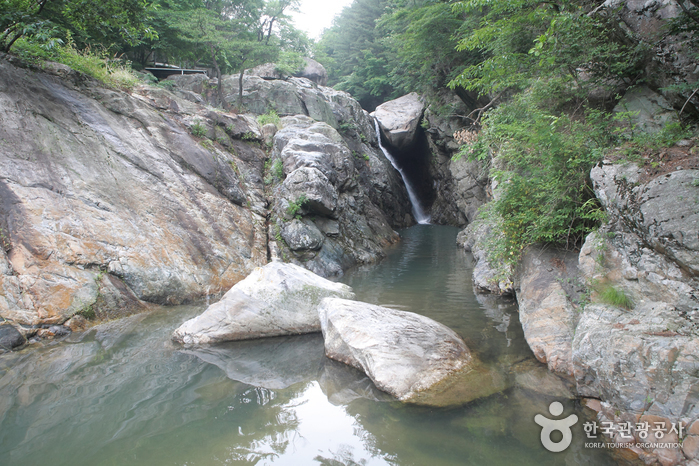

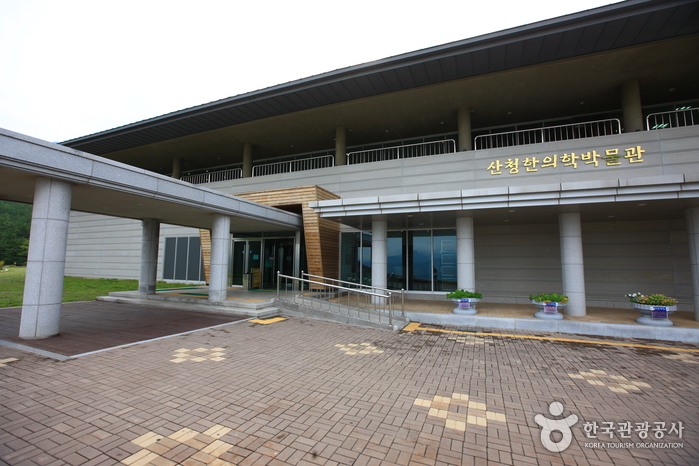
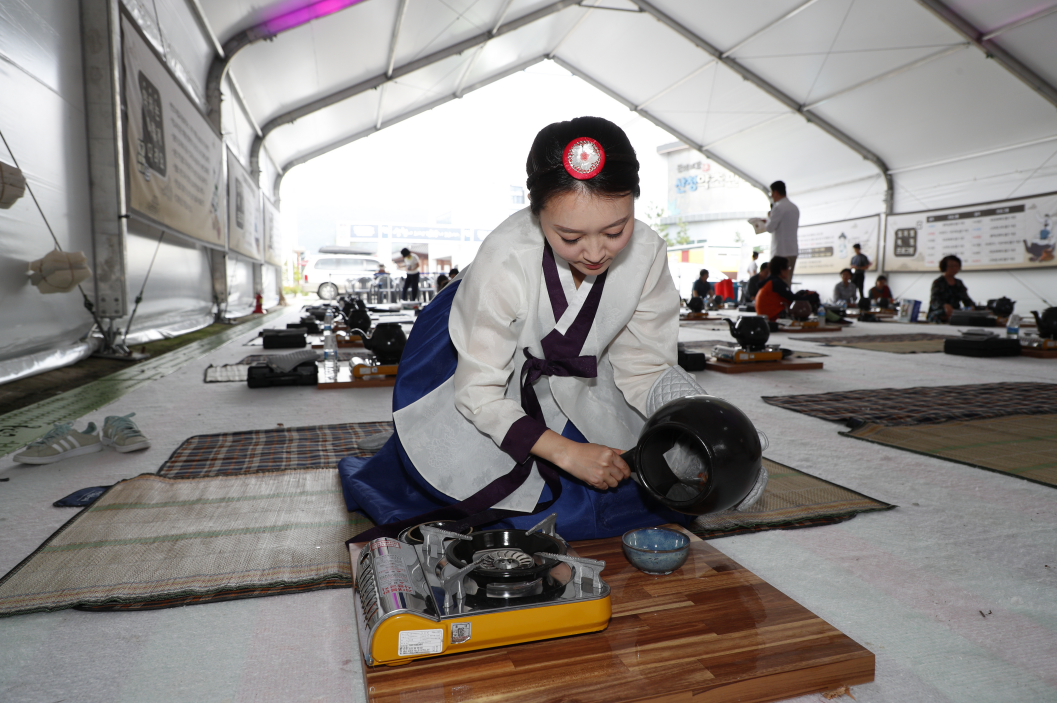
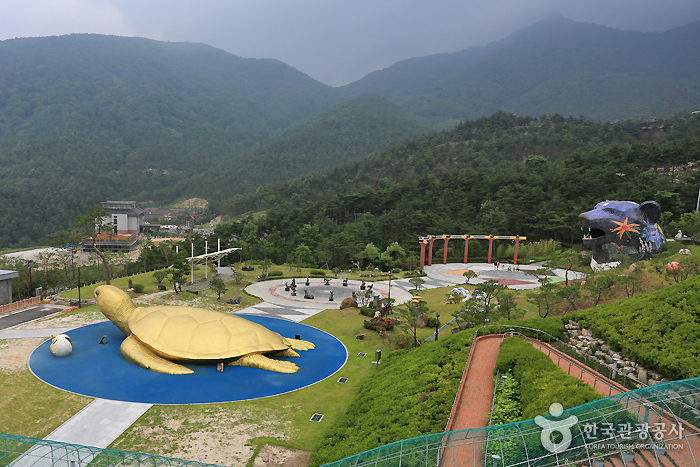
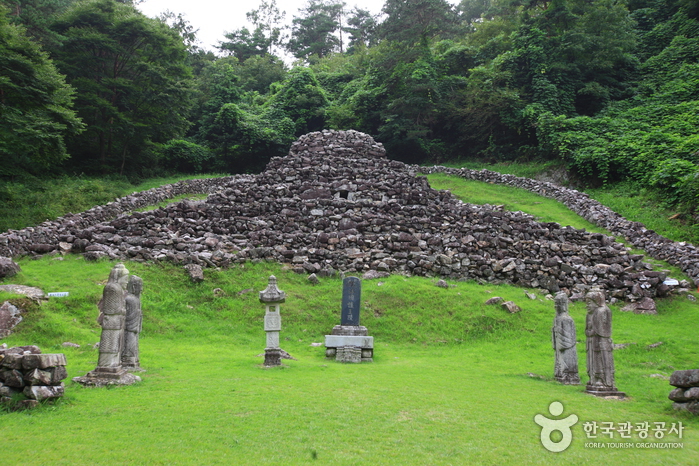
![Umyeongri [Korea Quality] / 우명리 정씨고가(효리댁) [한국관광 품질인증]](http://tong.visitkorea.or.kr/cms/resource/78/2572478_image2_1.jpg)
![Namgyeseowon Confucian Academy [UNESCO World Heritage] (남계서원 [유네스코 세계문화유산])](http://tong.visitkorea.or.kr/cms/resource/63/2996963_image2_1.jpg)
 English
English
 한국어
한국어 日本語
日本語 中文(简体)
中文(简体) Deutsch
Deutsch Français
Français Español
Español Русский
Русский